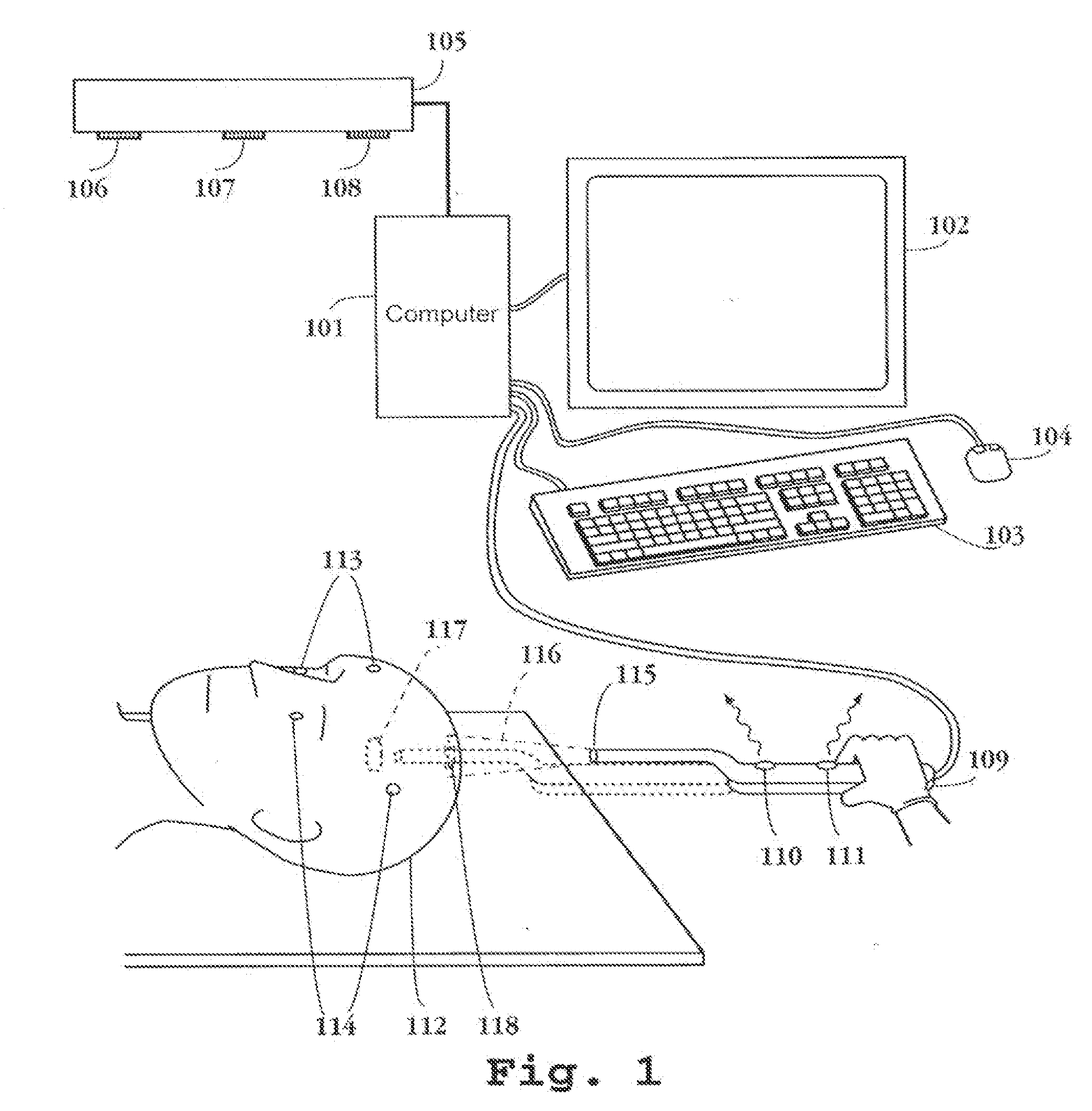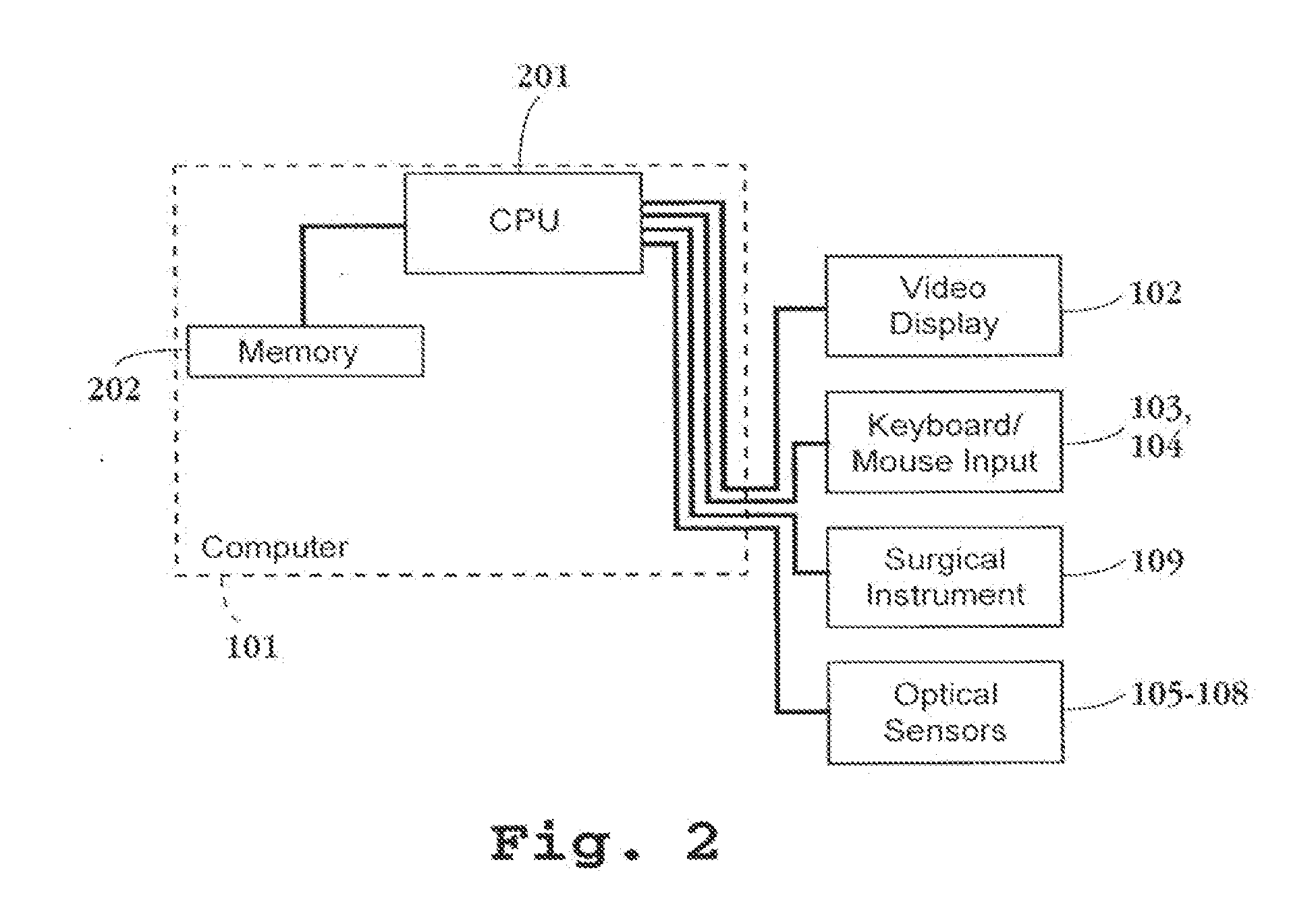Method and Apparatus for Volumetric Image Navigation
a volumetric image and navigation technology, applied in applications, ultrasonic/sonic/infrasonic diagnostics, diagnostic recording/measuring, etc., can solve the problems of relatively rapid procedure, limited signal-to-noise ratio, and ultrasonic scanning
- Summary
- Abstract
- Description
- Claims
- Application Information
AI Technical Summary
Benefits of technology
Problems solved by technology
Method used
Image
Examples
Embodiment Construction
[0041]FIG. 1 shows the apparatus of the invention as used in performing or planning a neurosurgery operation. In this drawing the patient's head 112, has a tumor or lesion 117, which is the target object of the operation. Fiducial markers 113, 114 are attached to the head to enable registration of images generated by previously obtained scan data according to techniques familiar to persons of ordinary skill in the relevant art. A surgical probe or instrument 109 held by the surgeon is directed toward the tissues of interest. A computer 101 is connected to user input devices including a keyboard 103 and mouse 104, and a video display device 102 which is preferably a color monitor. The display device 102 is located such that it can be easily viewed by the surgeon during an operation, and the user input devices 103 and 104 are placed within easy reach to facilitate use during the surgery. The apparatus further includes a position tracking system, which is preferably an optical tracking...
PUM
 Login to View More
Login to View More Abstract
Description
Claims
Application Information
 Login to View More
Login to View More - R&D
- Intellectual Property
- Life Sciences
- Materials
- Tech Scout
- Unparalleled Data Quality
- Higher Quality Content
- 60% Fewer Hallucinations
Browse by: Latest US Patents, China's latest patents, Technical Efficacy Thesaurus, Application Domain, Technology Topic, Popular Technical Reports.
© 2025 PatSnap. All rights reserved.Legal|Privacy policy|Modern Slavery Act Transparency Statement|Sitemap|About US| Contact US: help@patsnap.com



